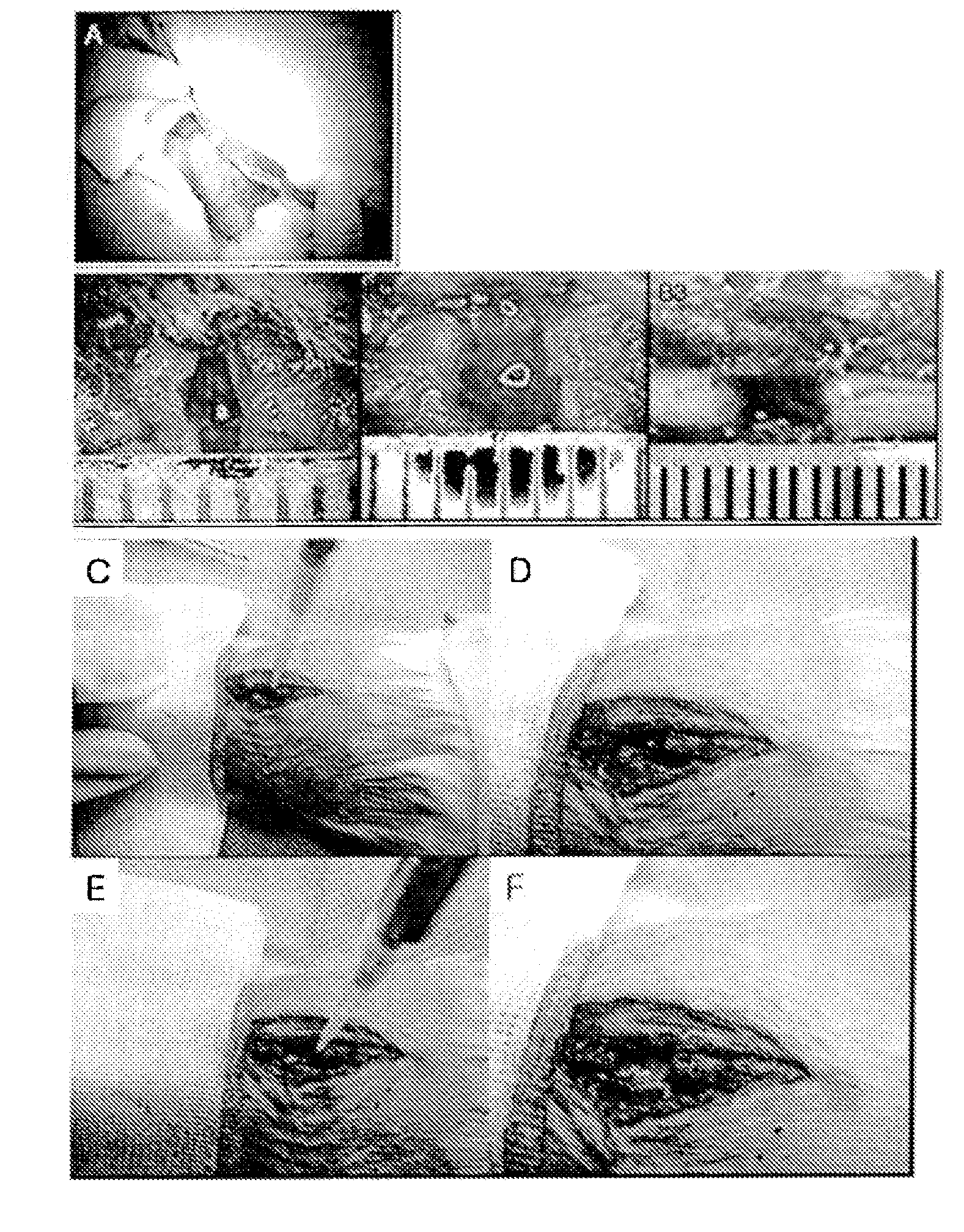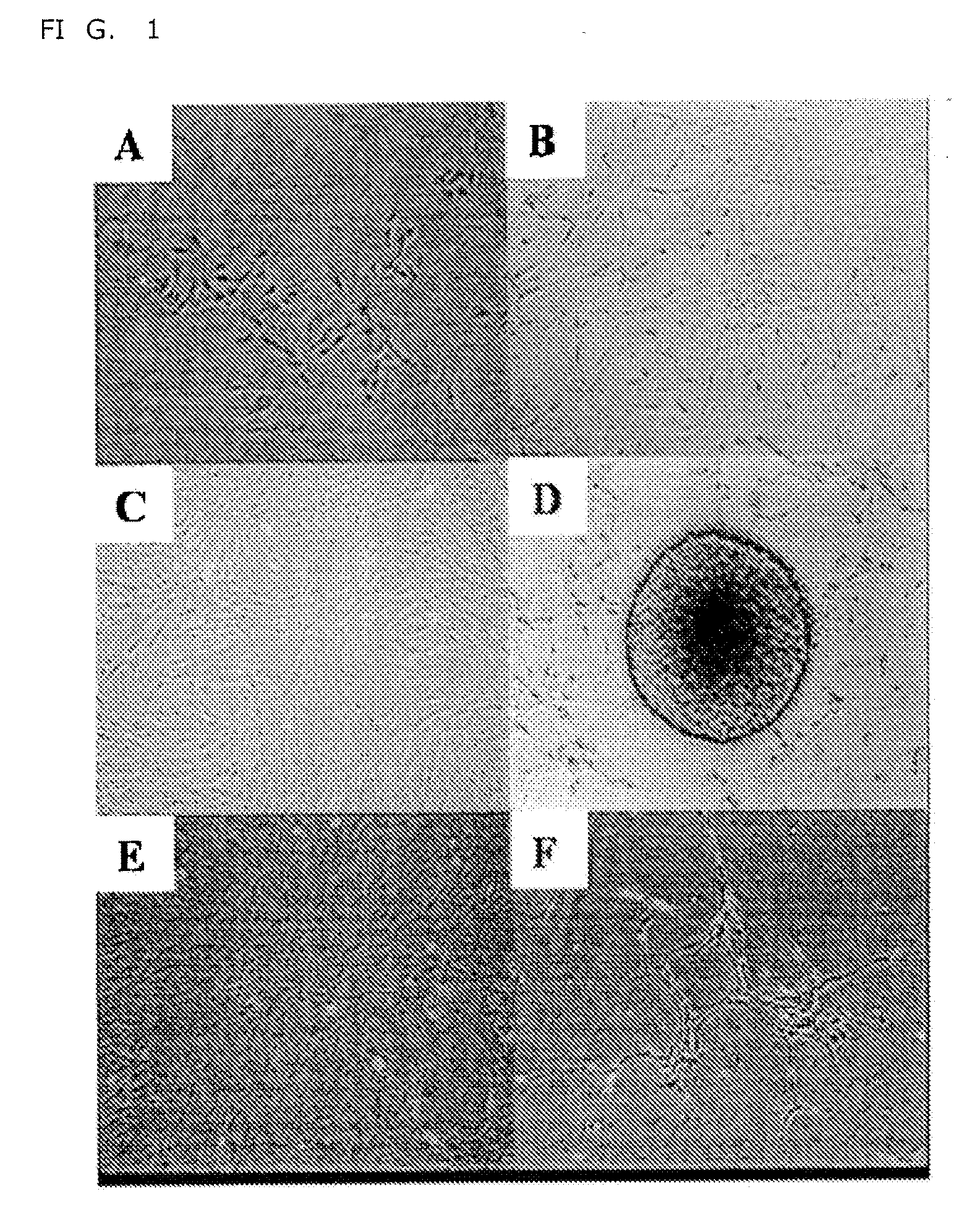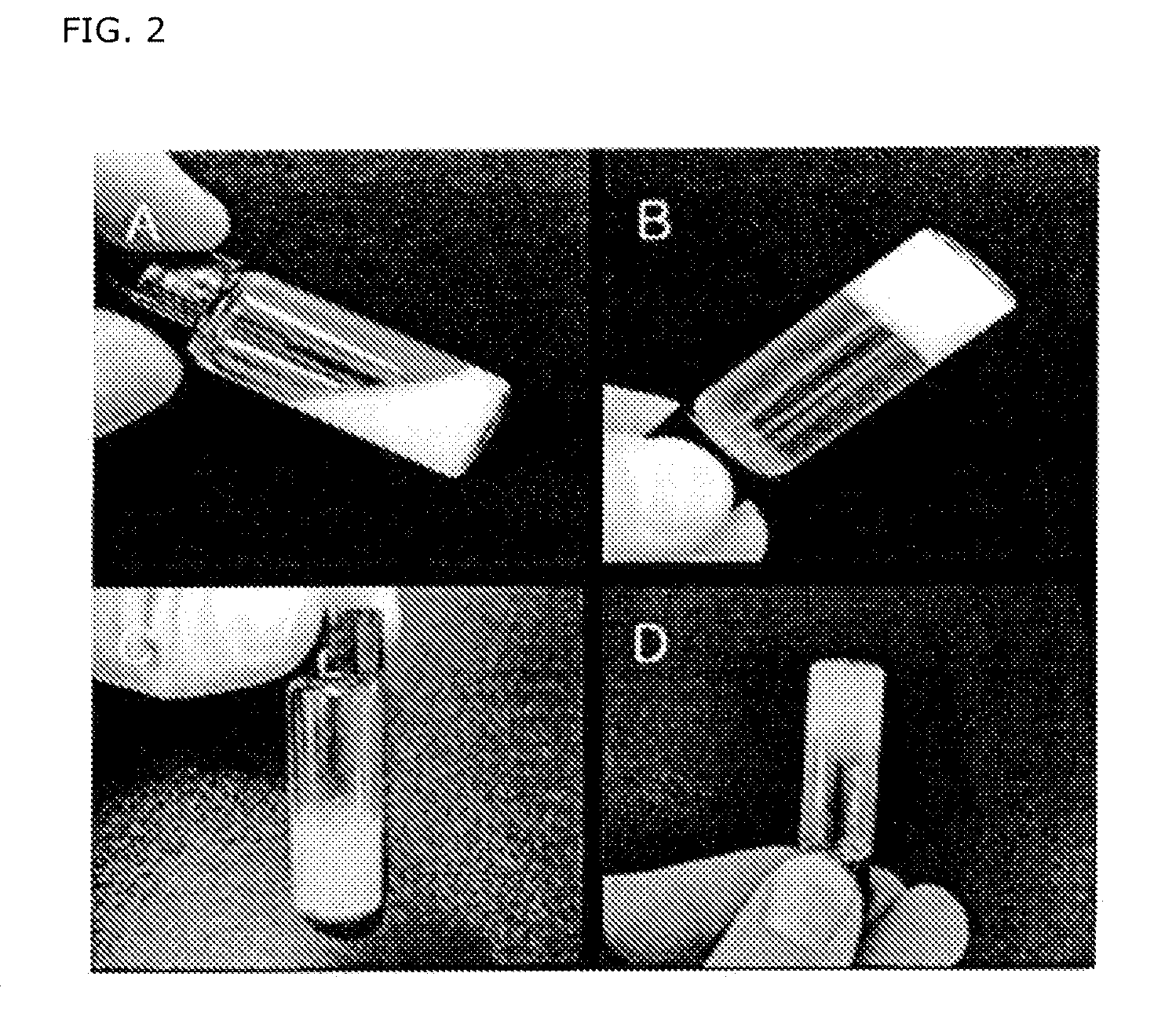Development of a tissue - engineered scaffold for nerve regeneration using a biocompatible and injectable hydrogel
a tissue-engineered scaffold and nerve regeneration technology, applied in the field of tissue-engineered scaffolds, can solve the problems ethical problems, and reduced nerve regeneration competence of embryonic stem cells, and achieve the effect of reducing the competency of nerve regeneration
- Summary
- Abstract
- Description
- Claims
- Application Information
AI Technical Summary
Benefits of technology
Problems solved by technology
Method used
Image
Examples
example 1
Isolation and Cultivation of Adult Stem Cells for Treating Injury of Spinal Nerve
[0074]Four kinds of adult stem cells for implantation on an injured part of spinal cord were separated as a cell source and cultured as follows.
[0075]As a first cell source, a stem cell derived from a skeletal muscle was isolated and differentiated into a nerve cell. In order to separate the stem cell derived from skeletal muscle, each femoral muscle region of 60 to 80 g of Fischer rats was cut to obtain muscles and then treated with collagenase to obtain single cells. The resulting cells were suspended with DMEM (Dulbecco's modified eagle medium) containing 5% fetal bovine serum, 5% horse serum and 2% antibiotics and seeded on a culture flask coated with collagen. In an hour, the cell supernatant was collected from the culture flask, centrifuged, washed by using fresh medium and again seeded on a culture flask. Most of fibroblasts were attached on the bottom of the culture flask within an hour. When be...
example 2
Isolation and Cultivation of Nerve Cells for Treating Injury of Spinal Nerve
[0079]An olfactory ensheathing cell and a Schwann cell were separated as a cell source and cultured to regenerate an injured part of spinal cord as follows.
[0080]As a first cell source, the olfactory ensheathing cell was separated from each skull of 60 to 80 g Fischer rats. Each skull was operated to isolate an olfactory organ, washed with HBSS buffer twice and then, treated with 0.125% trypsin to prepare single cells. The resulting cells were cultured with F12 / DMEM (Dulbecco's modified eagle medium) containing 10% fetal bovine serum and subcultured every 15 days while being refreshed with a new medium every 3 days.
[0081]As a second cell source, the Schwann cell was separated from 60 to 80 g Fischer rats. Sciatic nerve were isolated and immersed in Leibovitiz-15 medium to remove epithelial cells. The resulting nerve was cut into 1 mm size of pieces and cultured with DMEM media containing 10% fetal bovine ser...
example 3
Preparation of Polyethylene Glycol / Biodegradable Polyester Block Copolymer
[0082]In order to prepare MPEG-PCL / PPDO block copolymers having 3,150 g / mole of molecular weight, 1.67 g (2.24 mmole) of methoxypolyethylene glycol (MPEG) as an initiator and 80 mL of toluene were mixed in a 100 mL round flask under a well-dried state and distilled for 3 hours at 130° C. by using a Dean stock trap. After being distilled, the toluene remnant was discarded completely and the resulting methoxypolyethylene glycol (MPEG) was cooled to a room temperature. Then, 5.08 g (44.5 mmol) of ε-caprolactone (CL) and 0.28 g (2.62 mmol) of p-dioxanone (PDO) were injected in purified forms and then, 25 mL of methylene chloride (MC) was added after purified with a reaction solvent. Afterward, 4.5 mL of HCl was injected as a polymerizing catalyst and stirred for 24 hours at room temperature. The total process was performed with high-purity nitrogen. In order to remove non-reactive monomers or raw material after th...
PUM
 Login to View More
Login to View More Abstract
Description
Claims
Application Information
 Login to View More
Login to View More - R&D
- Intellectual Property
- Life Sciences
- Materials
- Tech Scout
- Unparalleled Data Quality
- Higher Quality Content
- 60% Fewer Hallucinations
Browse by: Latest US Patents, China's latest patents, Technical Efficacy Thesaurus, Application Domain, Technology Topic, Popular Technical Reports.
© 2025 PatSnap. All rights reserved.Legal|Privacy policy|Modern Slavery Act Transparency Statement|Sitemap|About US| Contact US: help@patsnap.com



